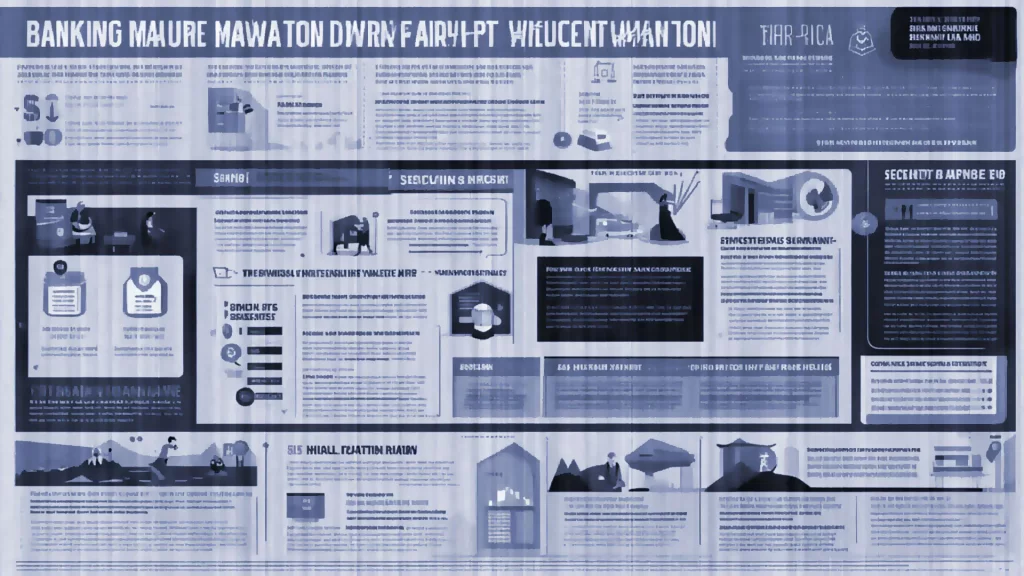In an alarming turn of events, the nefarious Grandoreiro banking trojan has resurfaced with renewed vigor, orchestrating a sweeping phishing campaign that has already compromised over 1,500 financial institutions across more than 60 nations worldwide. This brazen resurgence comes mere months after an international law enforcement operation, spearheaded by Brazil, Spain, and INTERPOL, succeeded in disrupting the malware’s operations and apprehending its key perpetrators.
The Grandoreiro Saga: A Chronicle of Cyber Threats
Grandoreiro, a formidable malware strain that has terrorized Spanish-speaking countries since its inception in 2017, has garnered a reputation as a potent cybersecurity menace. Its modus operandi involves infiltrating systems through meticulously crafted phishing emails that impersonate reputable organizations, such as courts, telecommunication providers, and energy companies.
Once embedded within a victim’s system, Grandoreiro unleashes a barrage of malicious activities, including tracking keyboard inputs, simulating mouse movements, sharing screen captures, and displaying deceptive pop-ups – all in a calculated effort to pilfer sensitive data like usernames, operating system information, device runtimes, and, most crucially, bank account credentials.
With unfettered access to compromised accounts, the perpetrators behind Grandoreiro swiftly siphon funds through an intricate network of money mules, subsequently laundering the ill-gotten proceeds before transferring them to their Brazilian base of operations.
The Crackdown: A Momentary Reprieve
In January 2024, a collaborative effort between Brazilian authorities, INTERPOL, and their Spanish counterparts appeared to have dealt a significant blow to the Grandoreiro operation. The culmination of this endeavor was the arrest of five key administrators orchestrating the banking trojan’s nefarious activities and the execution of thirteen search and seizure operations across various Brazilian states.
However, this victory proved to be short-lived, as Grandoreiro has resurfaced with renewed potency, likely facilitated by a malware-as-a-service (MaaS) model that has enabled other cybercriminal entities to leverage its capabilities.
A Metamorphosis: Grandoreiro Evolves
The latest iteration of Grandoreiro has undergone a significant technical overhaul, incorporating a myriad of new features and enhancements that have elevated its evasive capabilities and overall effectiveness as a threat. Among the most notable additions are:
1. Revamped String Decryption Algorithm
Grandoreiro now employs a sophisticated string decryption algorithm that combines AES CBC encryption with a custom decoder, making it more resilient against reverse engineering efforts and detection by security mechanisms.
2. Enhanced Domain Generation Algorithm (DGA)
The malware’s updated DGA incorporates multiple seeds, enabling it to segregate its command-and-control (C2) communications from operator tasks, thereby enhancing its stealthiness and operational efficiency.
3. Microsoft Outlook Exploitation
In a particularly insidious development, Grandoreiro has acquired the ability to hijack Microsoft Outlook clients on infected hosts, disabling security alerts and leveraging these compromised email accounts to propagate phishing lures to new targets, amplifying its reach and propagation potential.
4. Expanded Targeting Scope
While Grandoreiro’s previous iterations primarily focused on banking applications, the latest version has broadened its crosshairs to encompass cryptocurrency wallets, further diversifying its potential attack surface and revenue streams.
5. Victim Profiling and Selective Execution
Demonstrating a heightened level of sophistication, the updated Grandoreiro incorporates a victim profiling mechanism that determines whether or not to execute on a specific device, granting its operators greater control over their targeting scope and potentially evading detection in specific geographic regions or system configurations.
A Global Onslaught: Phishing Lures Transcend Borders
Capitalizing on its newfound capabilities, Grandoreiro’s phishing campaigns have taken on a truly global dimension, transcending linguistic and geographic boundaries. Researchers at IBM’s X-Force team have documented phishing lures impersonating government entities from Mexico, Argentina, and South Africa, including tax administration organizations, revenue services, and federal electricity commissions.
These meticulously crafted emails, written in the recipient’s native language and adorned with official logos and formatting, compel unsuspecting victims to click on malicious links under the guise of viewing invoices, account statements, or tax documents. This simple yet effective tactic triggers the download of a ZIP archive containing the Grandoreiro loader, initiating the infection process.
A Persistent Threat: Evading Law Enforcement’s Grasp

Despite the recent law enforcement crackdown, Grandoreiro’s creators have managed to evade arrest, undeterred by the setback and determined to continue their nefarious activities. This resilience, coupled with the malware’s technical enhancements and expanded targeting scope, has solidified Grandoreiro’s status as a persistent and formidable threat in the cybersecurity landscape.
As the battle against this potent banking trojan rages on, it serves as a stark reminder of the ever-evolving nature of cyber threats and the imperative need for vigilance, collaborative efforts, and proactive security measures to safeguard individuals, businesses, and financial institutions worldwide.
Grandoreiro’s Resurgence: A Wake-up Call
The resurgence of Grandoreiro is a sobering wake-up call for the cybersecurity community and a poignant reminder of the relentless nature of cyber threats. As this malware strain continues to adapt and evolve, it underscores the importance of staying ahead of the curve through continuous research, threat intelligence sharing, and the development of robust security measures.
Moreover, the global scale of Grandoreiro’s phishing campaigns highlights the need for increased international cooperation and coordination among law enforcement agencies, security researchers, and private sector entities. Only through a concerted and unified effort can we hope to mitigate the impact of such pervasive and pernicious threats.
Safeguarding Against Grandoreiro: Proactive Measures
In the face of Grandoreiro’s resurgence, it is imperative for individuals and organizations to adopt a proactive stance and implement comprehensive security measures to fortify their defenses. Some recommended strategies include:
1. Employee Education and Awareness
Conducting regular cybersecurity awareness training programs for employees can significantly enhance their ability to identify and avoid falling victim to sophisticated phishing attempts, which remain the primary attack vector for Grandoreiro.
2. Robust Email Security Solutions
Implementing advanced email security solutions, such as spam filters, malware scanners, and phishing detection mechanisms, can help mitigate the risk of Grandoreiro infections by blocking malicious emails before they reach end-users.
3. Endpoint Protection and Vulnerability Management
Ensuring that all endpoints, including workstations, servers, and mobile devices, are equipped with up-to-date antivirus software and regularly patched against known vulnerabilities can significantly reduce the attack surface for Grandoreiro and other malware strains.
4. Network Monitoring and Incident Response
Establishing robust network monitoring and incident response protocols can aid in the early detection and containment of potential Grandoreiro infections, minimizing the potential for data breaches and financial losses.
5. Collaboration and Information Sharing
Fostering collaboration and information sharing among security professionals, law enforcement agencies, and industry partners can facilitate the timely dissemination of threat intelligence, enabling organizations to stay ahead of emerging threats like Grandoreiro.
By adopting a multi-layered approach to security and remaining vigilant against the ever-evolving tactics of cybercriminals, we can collectively work towards mitigating the impact of Grandoreiro and other malicious threats, safeguarding our digital assets and preserving the integrity of our financial systems.
The Grandoreiro Saga Continues: A Call to Action
The resurgence of Grandoreiro serves as a stark reminder that the battle against cybercrime is an ongoing and ever-evolving struggle. As this malware strain continues to adapt and innovate, it is imperative that we remain proactive, vigilant, and steadfast in our commitment to cybersecurity.
Through a concerted effort involving law enforcement agencies, security researchers, private sector entities, and individual users, we can collectively work towards mitigating the impact of Grandoreiro and other malicious threats. By fostering international cooperation, sharing threat intelligence, and implementing robust security measures, we can fortify our defenses and safeguard our digital assets from the relentless onslaught of cybercriminals.
The Grandoreiro saga is far from over, but by heeding the lessons learned and remaining vigilant, we can emerge victorious in this ongoing conflict, ensuring the security and integrity of our financial systems and protecting the digital lives of individuals worldwide.









